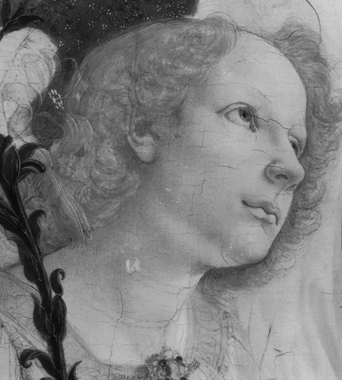Infrared radiation is too long in wavelength for the eye to see, so imaging techniques must be used to make it visible.
Infrared radiation is often used to ‘see through’ paint layers that are impenetrable to the human eye. It passes through paint until it reaches something that absorbs it, or it is reflected back to the camera.
Carbon black is very absorbent of infrared radiation. Therefore, if an artist has begun a painting by drawing the design in black on a white ground (known as an underdrawing), an infrared image can make this visible.

Infrared photography uses special film to record images. These can be printed like normal photographs for study. However, the narrow range of wavelengths used in infrared photography limits the pigments that can be penetrated.
Infrared reflectography is capable of recording a wider range of wavelengths, allowing for even greater penetration of different colours. Most of the cameras used for infrared reflectography are relatively low resolution. As a result, paintings must often be recorded in small areas and the images joined together to give a full picture (called an infrared reflectogram mosaic).
